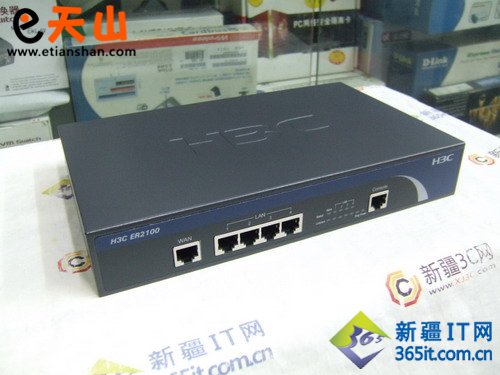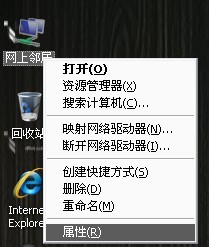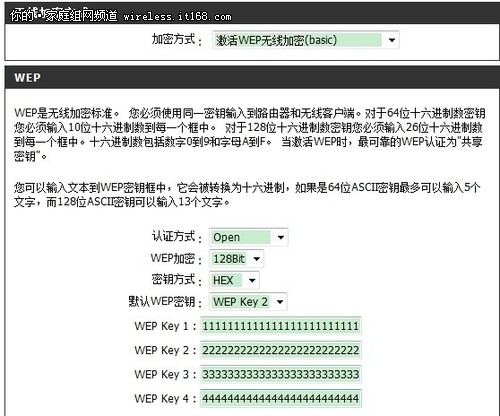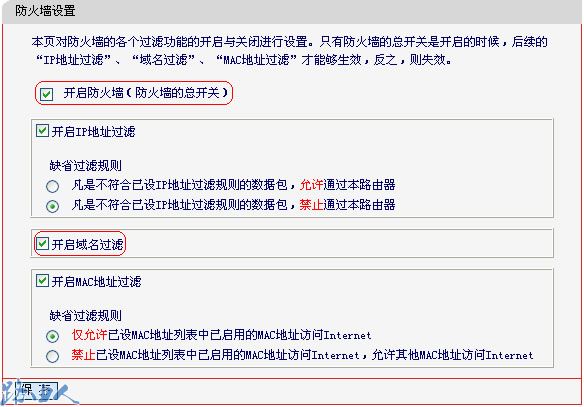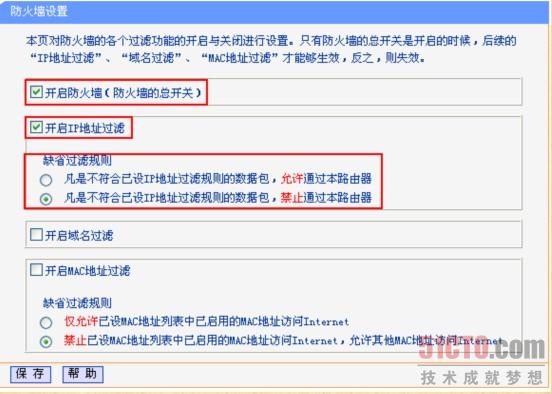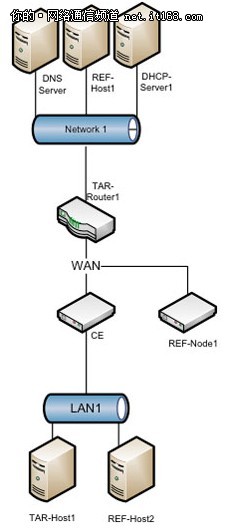路由器与交换将被取代?
【www.xinr41319.cn--路由器资讯】
美国斯坦福大学(Stanford University)工程教授 Nick McKeown 预期,未来十年将有一个新品种网络处理器取代目前路由器与交换器中使用的ASIC;他表示他已经深入研究过该种未来的通讯处理器:“而如果你努力瞇着眼睛看,它就像是网络的RISC处理器。”

McKeown协助推动以 OpenFlow 通讯协议为基础的软件定义网络,其目标是催生一系列全新的软件应用程序,以管理各种简化的交换器与路由器。如果他的任务成功,将可让营运大型资料中心与企业网络更为简单且成本更低,并可望颠覆目前采用复杂ASIC与专属程序代码、成本高昂的网络设备业务模式。
McKeown所预期的新品种商用芯片,将可取代目前包括Alcatel-Lucent、Cisco、 Ericsson、Juniper等大厂的ASIC方案;他表示,首批该类新芯片将会在接下来2~3年问世。
透 过与TI等厂商的合作,McKeown以论文形式完成了新品种组件的原型制作;它基本上包含用以转译每个资料封包中不断增加的各种标头(header)之 解析引擎(parsing engine),然后将封包推进一个与标头内图形匹配的执行单元(execution unit)流水线,并使其动作(action)。
“这是一个强制性的匹配-动作、匹配-动作前馈流水线(feed-forward pipe);”McKeown表示,其相关研究论文正在进行发表前的审查。
根据McKeown的论文,只要增加15%的芯片面积与功耗,该新型芯片就能以与目前仅支持特定通讯协议的ASIC之相同性能水准,处理今日或未来的任何一种通讯协议。他预期,那些大型路由器与交换器业者,在十年之内就会以该类芯片取代他们的ASIC,并转型为软件公司。
“我 们在十年内就能看到成果,那些厂商将会在最上层提供控制平面软件(control plane software)与应用程序。”他指出,已经有两、三家业者在研究开发该类芯片,包括新创公司xPliant,以及TI或可能Cavium、 Mellanox 这类老牌公司。
“商用芯片会是OpenFlow计划的主要推动力之一;”McKeown表示:“现有芯片供货商包括Broadcom与Marvell的交换器芯片都已经准备加入对OpenFlow的支持──这是他们应该做的,而且他们从一开始就有参与。”
随着新一代软件与硬件的诞生,技术的演进将会推动产业的革命。目前1.x版本的OpenFlow代表着一种妥协,McKeown指出:“理想上我们将让它以 一种通用的匹配-动作工作流程来开始,但也得让它映像(map)到现有的芯片上──下一代的技术将会是更不仰赖特定协议。”
去年,负责监管OpenFlow协议的开放网络基金会(Open Networking Foundation,ONF),忙着邀集ASIC供货商成立Forwarding Abstractions工作小组;该工作小组的宗旨是将OpenFlow希望达成的目标与现有、计划中ASIC的目标之间的鸿沟缩小。
现在,ONF正展开“芯片顾问委员会(chip advisory board)”的成立工作;McKeown表示:“我们将向他们学习芯片技术的可能性,从那里可以衍伸出下一代OpenFlow的可能性。”
OpenFlow 已开始采用内容可寻址内存(content-addressable memories)作为路由器与交换器ASIC的中间媒介,不过这种方法的功能有限制;因此最近该标准开始使用一种匹配多重窗体(matching multiple tables)技术。McKeown表示:“不仅支持单一种协议的OpenFlow版本还要好一段时间才会诞生。”
在 软件部分,催生软件定义网络(SDN)的程序代码也陆续诞生中;新创公司包括Big Switch Networks与已经被VMWare收购的Nicira,都已经有它们的OpenFlow控制器软件。在本月稍早,有18家大型通讯设备业者与软件供应 商宣布合作推动一项Open Daylight计划,旨在为SDN控制器、相关应用程序接口(API)等建立开放源码环境。
产业观察家预期,各大厂将争相让自家程序代码成为Open Daylight计划的一部分;一旦市场上出现够可靠的产品,IBM这类大型业者将会愿意花钱采用,藉以提供整合型服务──不过恐怕要等到两三年之后。
McKeown以一种后来变成Linux的API标准集Posix为比喻;他指出,该种有不同版本的操作系统花了十年的时间才安定下来到某个让Posix应用程序接口能被撰写出来的阶段,同样的情况可能也会发生在SDN的应用程序接口上。
Will ASICs be replaced in comms gear?
Rick Merritt
Stanford’s Nick McKeown sees a new breed of merchant networking processors replacing ASICs in routers and switches over the next decade SAN JOSE, Calif. – Nick McKeown, an engineering professor at Stanford University, expects a new breed of merchant networking processors to replace ASICs in routers and switches over the next decade.
McKeown says he has looked into the future of communication processors “and if you squint hard it looks like RISC for networking.”
McKeown helped kick start the movement toward software-defined networking based on the OpenFlow protocol. Its goal is to enable a new class of software apps that manage gangs of simplified switches and routers.
If the effort succeeds it could ease and lower the cost of running large data centers and business networks. It will also disrupt the current business model based on expensive network gear that uses complex ASICs and proprietary code.
McKeown sees a new breed of merchant chips taking the place of the big ASICs companies such as Alcatel-Lucent, Cisco, Ericsson, Juniper and others design today. The first attempts at creating them likely will emerge over the next two or three years, he said.
In a research effort with Texas Instruments and others, McKeown created a prototype on paper of the new device. It essentially consists of a parsing engine that interprets the increasingly wide set of headers on each packet then pushes the packet into a pipeline of execution units that match patterns in the headers and take actions on them.
“It’s a brute force feed-forward pipe of match and action, match and action,” he said, relating work in a paper now under review for publication.
The paper reports that for 15 percent more silicon area and power such a chip could handle any current or future protocol at the same performance levels as today’s protocol-specific ASICs. McKeown predicts that in a decade the big router and switch players will have replaced their ASICs with such merchant chips and morphed into software companies.
“We’ll look back in 10 years and they will be providing control plane software and apps on top of it,” he said.
Two or three companies are said to be exploring such chips already including startup xPliant and existing players such as TI and possibly Cavium and Mellanox.
“Merchant silicon is one of the prime drivers of this movement,” said McKeown. “The incumbent chip vendors such as Broadcom and Marvell are adding OpenFlow support to their switches already--that’s what they should do, and they have been involved from the start,” he said.
A chicken-and-egg dance
It will be revolution by evolution as the new software and new hardware emerge in a chicken-and-egg dance.
The current 1.x versions of OpenFlow represent a compromise. “Ideally we would have started it as a generic match-and-action flow, but it had to be mapped on to existing chips—the next generation will be more protocol independent,” McKeown said.
Last year, the Open Networking Foundation (ONF) that oversees OpenFlow engaged ASIC makers in a so-called Forwarding Abstractions working group. It aimed to narrow the gulf between what OpenFlow wants to enable and what existing and planned ASIC do.
Now ONF is starting a new effort it calls a chip advisory board. “We will learn from them what’s possible [in silicon], and out of that will emerge what’s possible for the next generation of OpenFlow,” he said
OpenFlow began using content-addressable memories as an intermediary to interface to router and switch ASICs, but the approach limited its functionality. More recently it has used a technique of matching multiple tables.
“The protocol independent version [of OpenFlow] will take awhile,” McKeown said.
An evolving software stack
On the software side, the pieces of the code to enable software-defined networks are still emerging as are the people who will write it.
Startups including Big Switch Networks and Nicira, now part of VMWare, already have their own versions of OpenFlow controllers. Earlier this month, eighteen large comms and software vendors launched Open Daylight, an effort to create open source code for SDN controllers, the APIs for apps that ride on it and maybe more.
Observers expect the giants to jostle over whose code becomes part of Open Daylight. If a solid product emerges they say companies such as IBM will make money selling integration and services using it—but that could be two or three years away.
McKeown uses the metaphor of Posix, a standard set of APIs for what became Linux. It took a decade for the various flavors of the operating system to settle down to a stage that the Posix APIs could be written. The same may be true for the APIs the enable software-defined networking, he said.
无线ac控制器 常见的交换设备有
上一篇:会“分配”网速的路由器
下一篇:三层交换机如何设置路由连接

